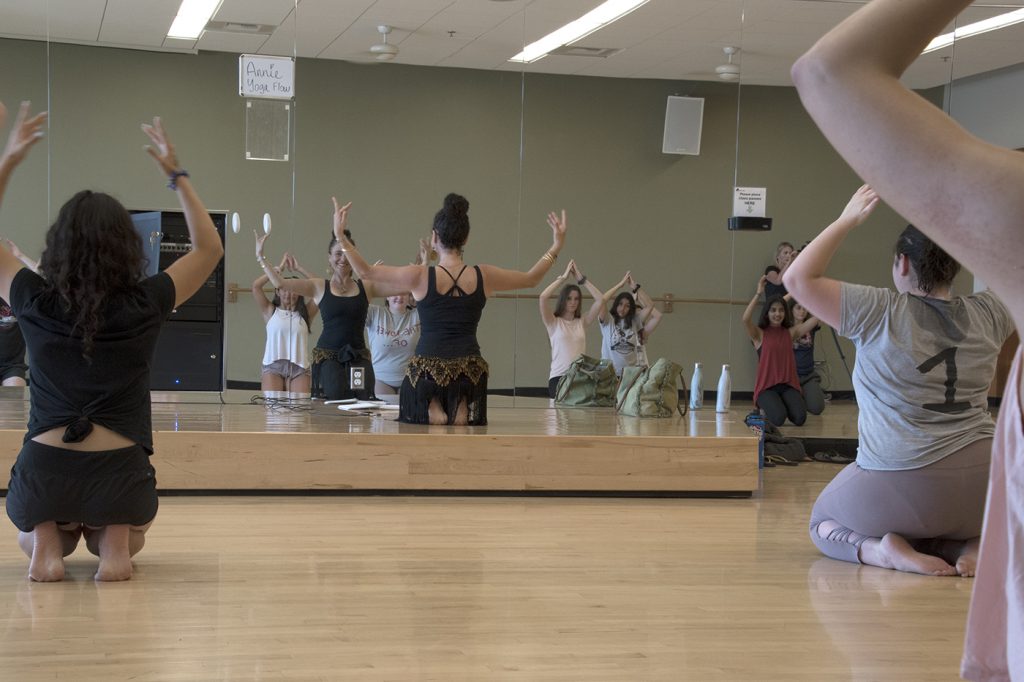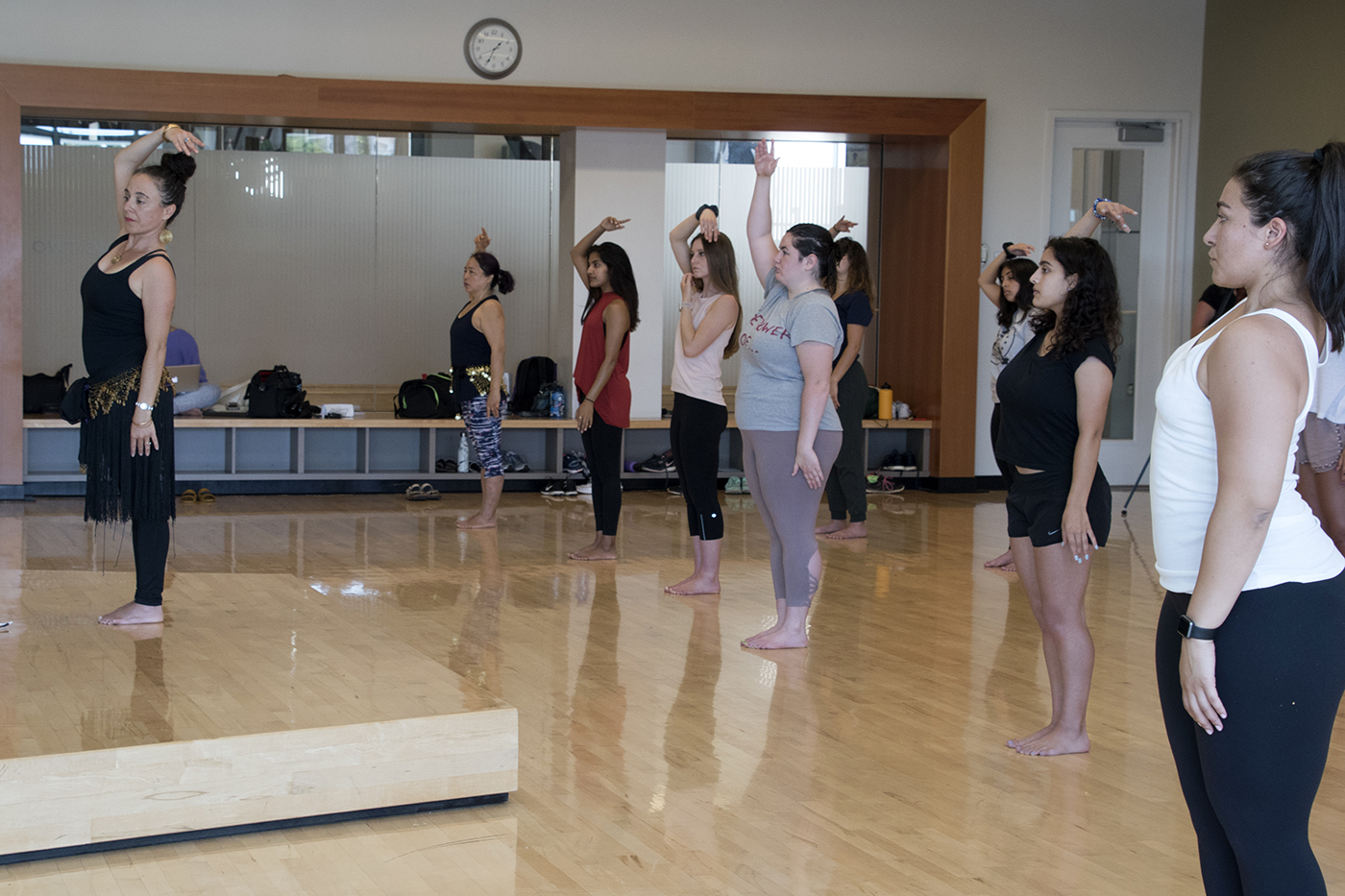Dressed in traditional skirts with gold coins, students and community members shuffled into the Recreation Center dance studio. Amid the weights, treadmills and ab machines, they shimmied their hips and immersed themselves in the traditional dances of the Arab world.
On Saturday, May 11, Associated Students, Inc. (ASI) hosted their quarterly belly dancing workshop. Known by the term “belly dancing” in many western contexts, Arabic Dance is an expressive art form that emphasizes complex torso movement. Originating in Egypt, the dance form has existed for hundreds of years and has been adopted by many different cultures around the world.
The two-hour wokrshop was led by instructor Sandra Sarrouf, who has not only been practicing the art of belly dancing, but also a diverse range of dance styles, for her whole life.
Sarrouf started dancing at 7 years old when she enrolled in ballet, jazz and tap classes. In college, she was a part of the University of California, Santa Barbara (UCSB) Middle Eastern Ensemble company.
Wanting to share the culture and music with the San Luis Obispo community, Sarrouf said she started teaching belly dancing after moving from Santa Barbara, when she got her undergraduate degree. For the past 20 years, Sarrouf has intensely studied culturally specific art forms and techniques, and now applies what she’s learned into her teachings.
“Teaching is a great way to open people’s hearts and minds around Middle Eastern culture,” Sarrouf said. “It’s one very small entrypoint to the vast culture.”
“Teaching is a great way to open people’s hearts and minds around Middle Eastern culture”
Sarrouf holds a master’s degree in cultural sustainability from Goucher College, which allows her to bring her own heritage of music and dance with her immigration experience.
“It’s a way of doing community work that reflects the diversity of our community in a way that’s embraced,” Sarrouf said.
She regularly immerses herself in many other cultural-specific dance and art forms as a “bridge to cross-cultural engagement.”

Sociology senior Noah Krigel said he decided to finally try the belly dancing class his last quarter of college after having it on his bucket list for so long. Krigel, a runner and swimmer, was able to pick up the dance style but noticed some differences in the body’s impact.
“The way you move the muscles is very different from how I’ve been trained to move them in other sports,” Krigel said.
However, Krigel said he got much more out of the belly dance workshop than a good sweat.
“I really didn’t know how rich belly dancing was of a culture,” Krigel said. “I had no idea how much significance was embedded within this style of dance. It just showed how limited my understanding was of not only belly dancing but of Arabian cultures.”
The belly dancing class is just one vessel to learn about different cultures at Cal Poly. Sarrouf was involved in the Cal Poly Arab Music Ensemble, which focuses on many traditional folk dances from different backgrounds, from Lebanese, Syrian and Palestinian dances, as well as dance styles from North Africa, Algeria, Morocco and Egypt.
As for adding more cultural dance classes and resources on campus, Sarrouf said Eric Alexander, fitness director at the Recreation Center, is open to more cultural dance and fitness classes at the rec.
“For me, Belly Dance is one genre,” Sarrouf said. “Really, the big picture is Arab music and dance, and that could be even integrated into other departments in the university to learn about cultural sustainability and cultural diversity.”

